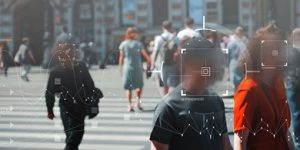
Facial recognition technology has become increasingly prevalent in recent years, with applications ranging from unlocking smartphones to identifying suspects in criminal investigations. Still, it is also being used in compelling ways to protect spaces, people, and assets.
Modern facial recognition solutions, like the Rock from Alcatraz AI were designed from the ground up to overcome the challenges (and misconceptions) of legacy facial recognition to more quickly, accurately, and privately authenticate individuals as part of an access control system. Despite its widespread use, there are still many misconceptions about how this technology works and the implications of its use.
Here, Alcatraz AI focuses on some of the common misconceptions about facial recognition technology, and puts the case forward for more wider use of the technology.
1. Facial recognition technology is too new and cutting-edge
While facial recognition technology has gained popularity in recent years, it has actually been around for decades. The first facial recognition system was developed in the 1960s, and the technology has continued to evolve.
While the technology is not new, modern technologies like artificial intelligence and machine learning, both described above, are making these systems faster, more accurate and overcoming many of the biases of early facial recognition systems.
2. The technology can be fooled
Early facial recognition systems were susceptible to being fooled by printed pictures, electronic pictures, or elaborate masks. Modern facial recognition systems employ “liveness” or anti-spoofing measures that use multiple cameras and 3D sensors to ensure that the subject in front of the camera is an actual person. This eliminates access breaches by people attempting to use images on phones, tablets, or even printed paper.
3. Facial recognition technology violates privacy
The use of facial recognition technology has raised privacy concerns, particularly when used in public places. However, the extent to which this technology violates privacy largely depends on how it is used and the measures in place to protect personal information.
A modern system like the Rock from Alcatraz AI was designed from the ground up to overcome the challenges of the past. Used as part of the access control system, the challenges of surveillance concerns are also a thing of the past. This modern system is different in four ways:
● Designed in compliance with the latest privacy frameworks, including General Data Protection Regulation (GDPR), the Illinois Biometric Information Protection Act (BIPA), and the California Consumer Privacy Act (CCPA).
● The facial template created during enrollment can never be reconstituted into an image of the subject.
● The facial templates use AES 256 encryption at the Edge and in the database. The templates are TLS 1.2 encrypted during transmission to the Cloud or TLS 1.3 encrypted for on premise database. These are the same security standards used by government agencies and top technology companies.
● Alcatraz AI encourages the Opt-In model where Users are given the choice to use facial authentication. When Users see the benefits of frictionless access in person, those Opt-In numbers skyrocket.
4. Facial recognition technology is only used by law enforcement
While law enforcement agencies commonly use facial recognition technology, it is also used in a variety of other industries, including retail, healthcare, and banking.
There are benefits to every type of business and the employees of those businesses for using facial recognition. For the business, the face is a credential that cannot be copied, stolen, shared or lost and for employees, it makes accessing buildings or other secured areas more touchless, faster, and easier.
5. Facial recognition technology is 100% accurate
While facial recognition technology has become increasingly accurate over the years, it is not perfect. Factors such as lighting, angle, and facial expressions can all impact the technology’s accuracy. Additionally, there have been instances of facial recognition systems misidentifying people, particularly those from marginalised groups as images scanned from the internet and the older AI were not as reliable. Also, twins are a known challenge as well.
However, modern facial recognition solutions built with artificial intelligence and machine learning are increasing the accuracy of systems. For AI access control, these systems are scanning a known population of users who have opted into using the system, which leads to faster authentication than systems scanning national databases. In addition, the advances in machine learning help the system adapt and authenticate to changes in the individual over time such as gaining or losing weight, having facial hair then shaving, wearing glasses or contact lenses, etc. The legacy systems that match to a static image do not have the accuracy of the modern solution.
Overall, Alcatraz AI suggests facial recognition technology has the potential to be a powerful tool, but it is important to understand its limitations and the potential implications of its use. As with any technology, it is important to consider the ethical implications and to ensure that appropriate safeguards are in place to protect privacy and prevent misuse. It is clear that today’s modern facial biometrics solutions when used as part of an AI access control system can reduce friction and make spaces more secure.











